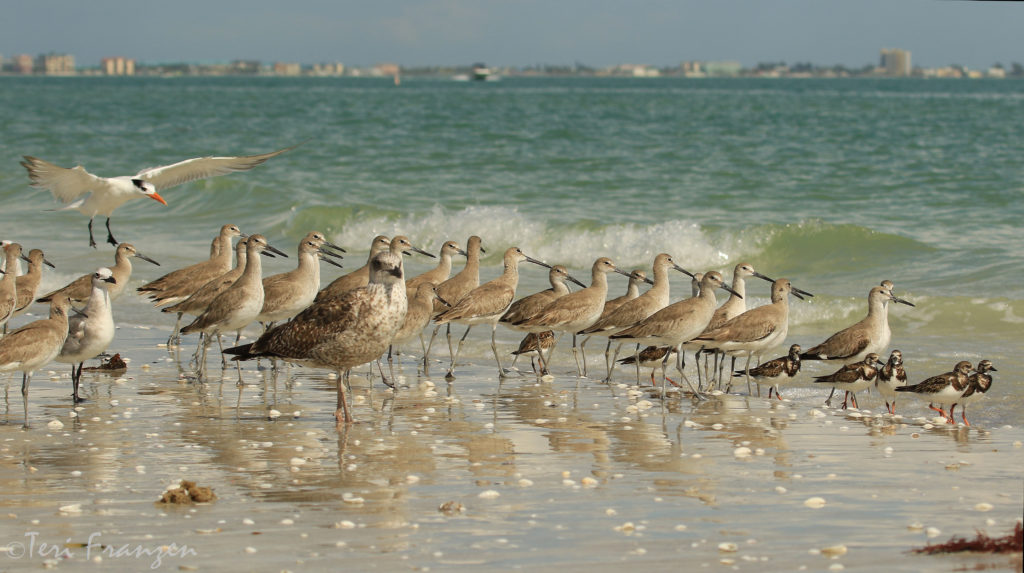Many years ago, long before I discovered birds and photography, I spent an afternoon on the beach of Sanibel Island, Florida. I remember looking for shells but I honestly don’t remember noticing a single bird. Now, fast forward to 2015 and I can’t walk 10 feet on the beach without stopping for several minutes to photograph the shoreline bird activities. Seriously, it can take me hours to go three blocks! But what’s different? Well it’s not the birds because they have always been there. So I guess it’s the photographer.
Sanibel Island is one of the best locations in the country to see a diverse number of bird species. Of course, I always go to J. N. “Ding”Darling National Wildlife Refuge, which warrants at least one entry of its own. But one of my favorite activities while on the island is to get up before sunrise and walk the beach with my camera to see the early morning bird activity. At first light I roll out of bed, grab my camera with my zoom lens and head out to spend the morning with the “locals” on the beach (you know, gulls, terns, shorebirds, pelicans, etc.)
In addition to the year-round population, during the winter you can find several migrant species basking in the sunshine before heading north to their summer breeding homes. And you can get very close to the birds in Florida because they are so used to people. As always, it is important to remember that the beach is their home. And while I’m photographing them I also try to keep enough distance to avoid disrupting them or interfering. Fortunately, in Florida, that’s not at all difficult to do!
I don’t know how I could have missed seeing all of this beauty right in front of me all those years ago, but I’m so glad I found it now. Below are some of my favorite photos from my March 2015 trip to the Sanibel shoreline:
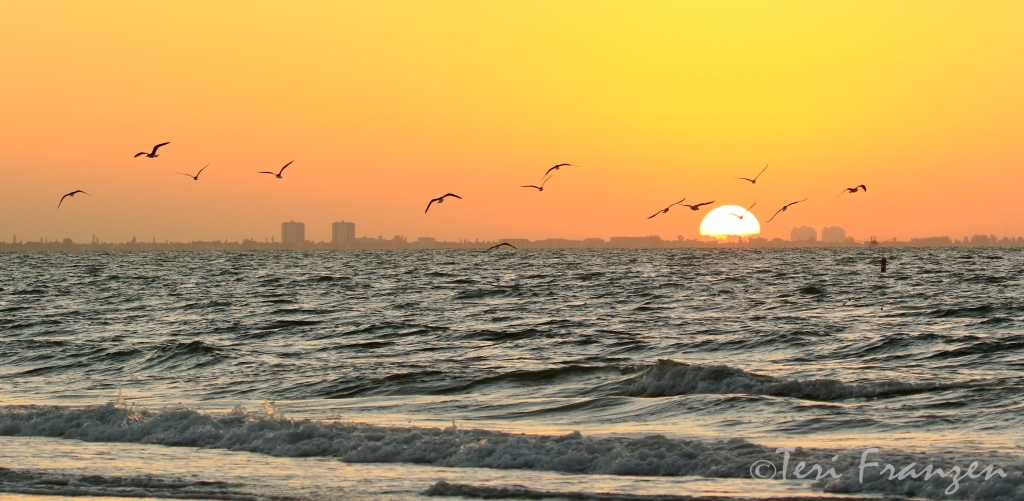
Sunrise looking out at Fort Myers from the Sanibel Gulf coastline. And gulls, of course.

Flight of the Peeps: Sanderlings are small shorebirds that are typically seen in flocks. Sanderlings breed high in the arctic tundra.

Sanderlings searching for food that has recently washed up onto the shore.

Black-bellied Plover in transitional plumage. This plover is a medium sized shorebird and can be found by itself as often as with a small group. These also breed high in the Arctic.
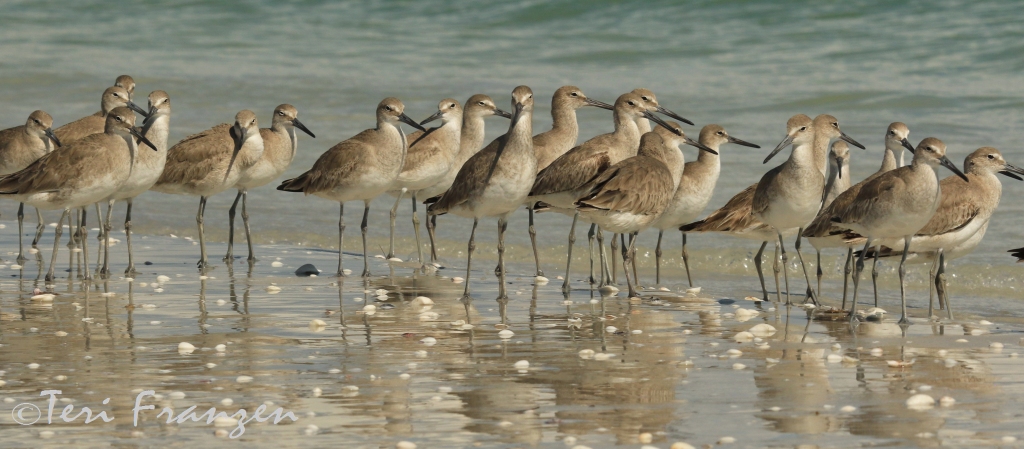
A group of Willets milling about on the shore. Willets are large shorebirds. Eastern Willet migration takes them to saltmarshes on barrier beaches and islands.

A snowy salute: Snowy Plover addressing an itch. A handful of these plovers actually stay on Sanibel to breed. There is only a small population of them in Florida so they are protected. Local conservationists place a fence around the nesting sites to prohibit interference.

Snowy Plover playing “King of the Mound”

It was exciting to spot a Piping Plover in with the group of Snowy Plovers during my 2015 visit. This species is a less common and classified as “Near Threatened” due to loss or degradation of habitat or activity near nesting sites.
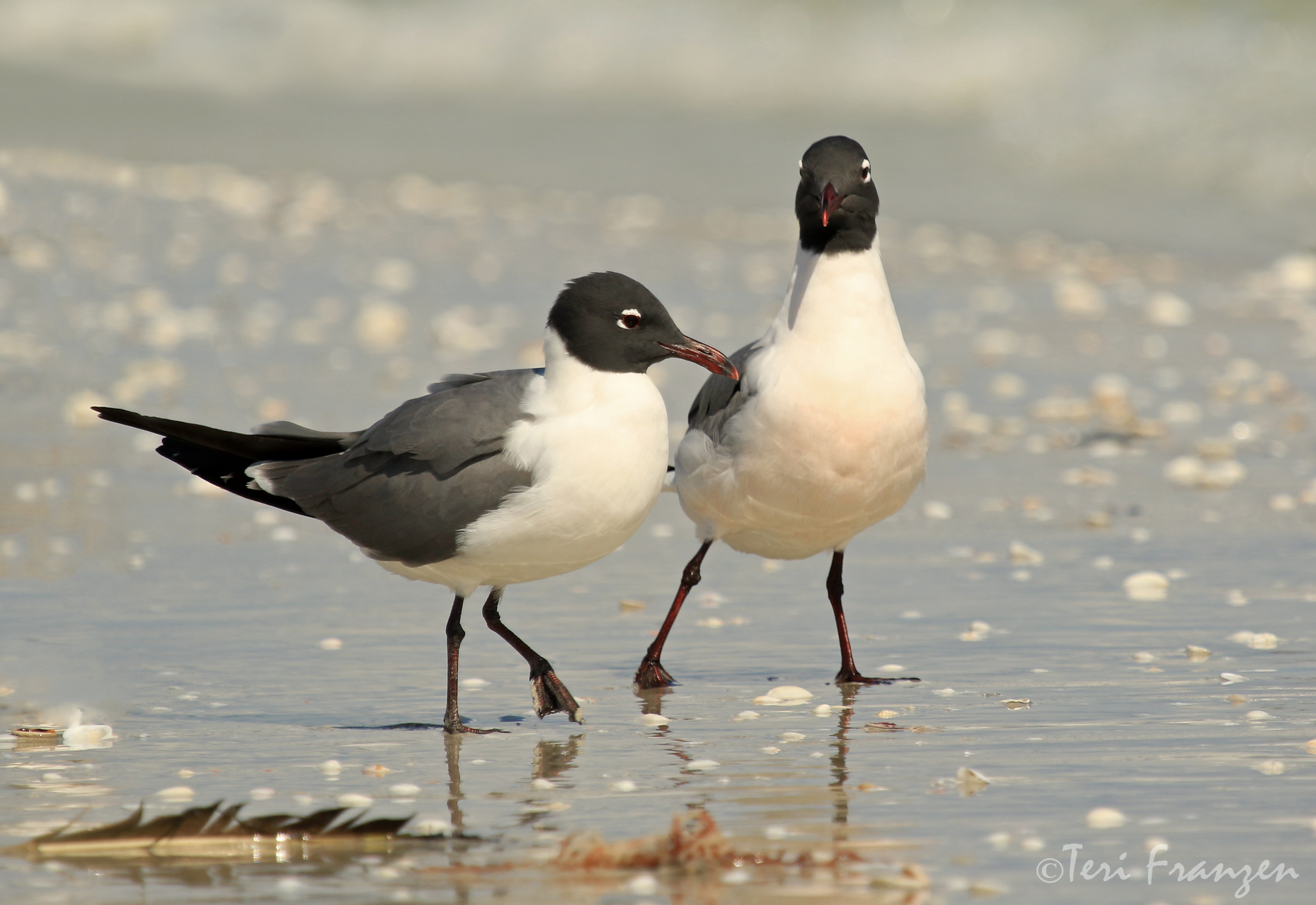
Laughing Gulls winter throughout the coastal southern US and South America. Most of them breed on islands near the shore.
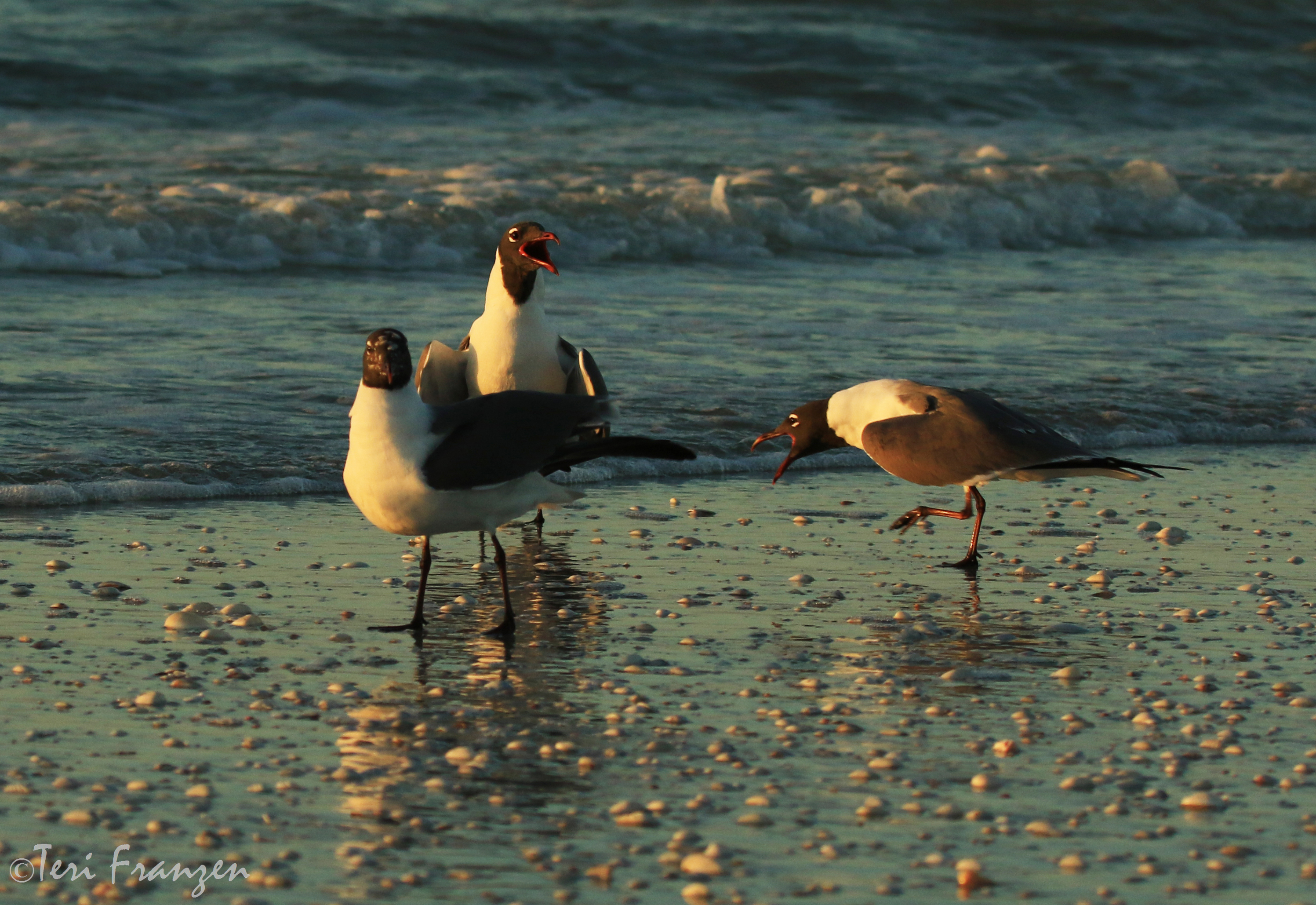
Laughing Gulls really do look and sound as though they are laughing.
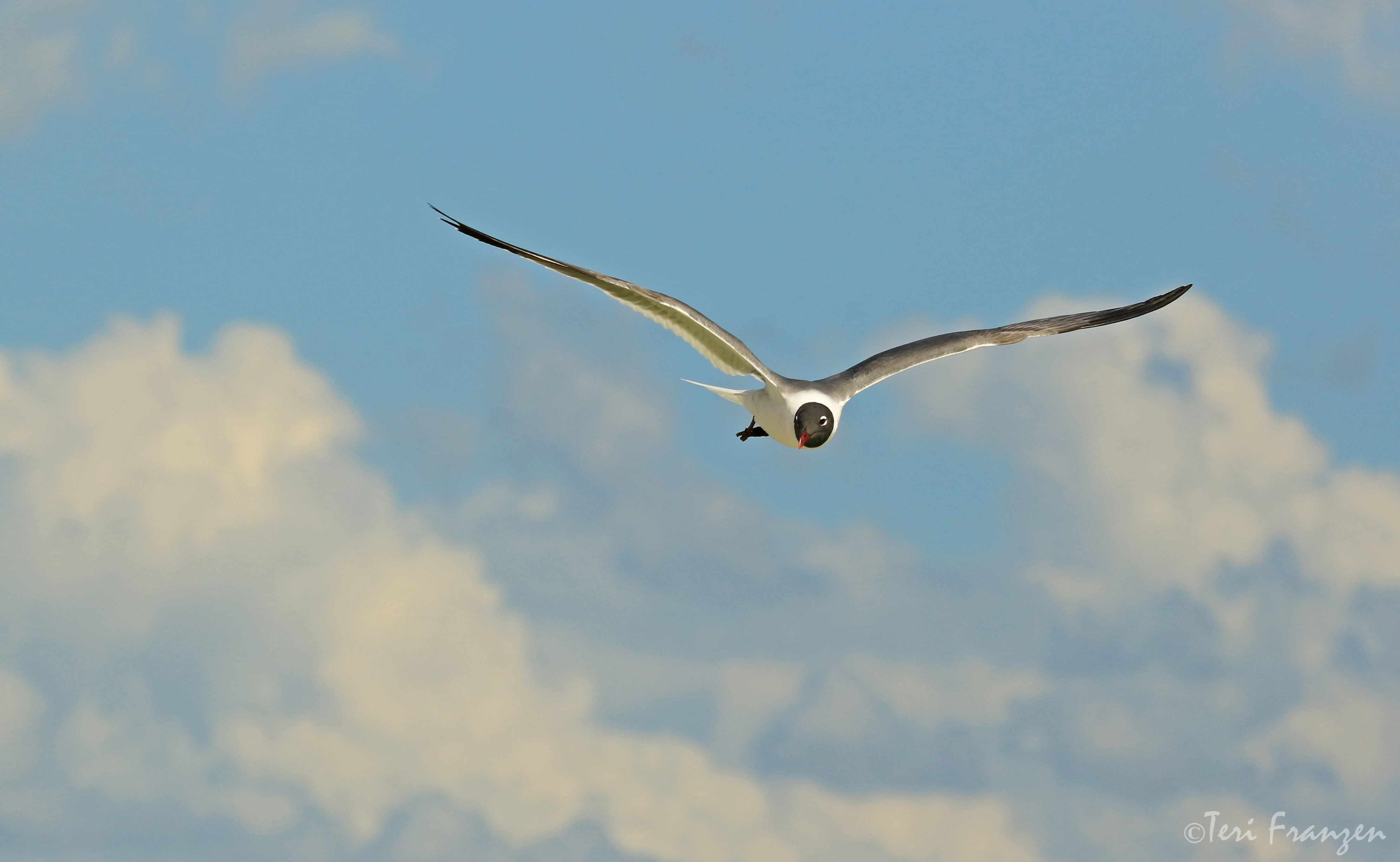
Laughing Gull floating among the clouds, showing its natural buoyancy.
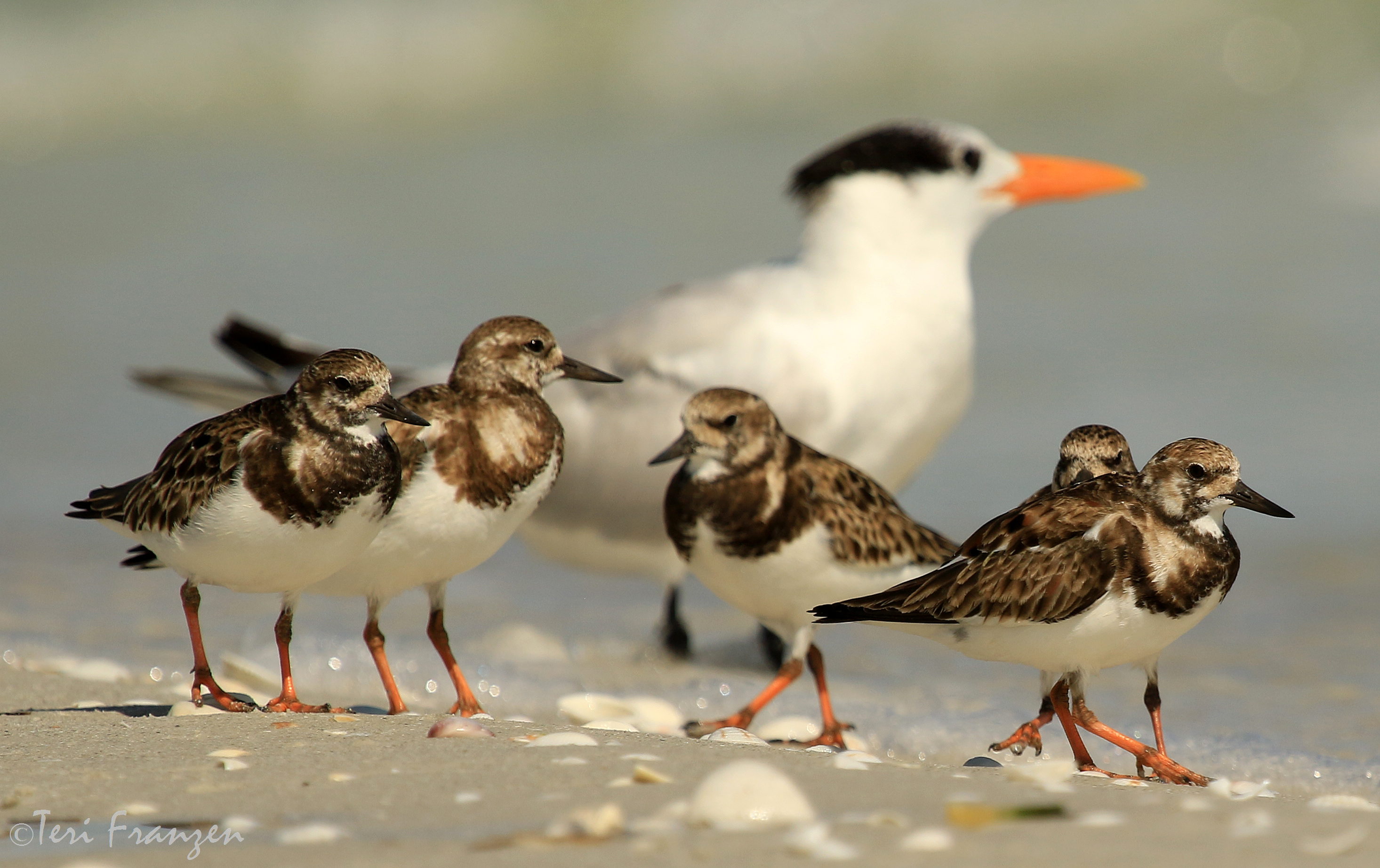
Ruddy Turnstones with a backdrop of a Royal Tern
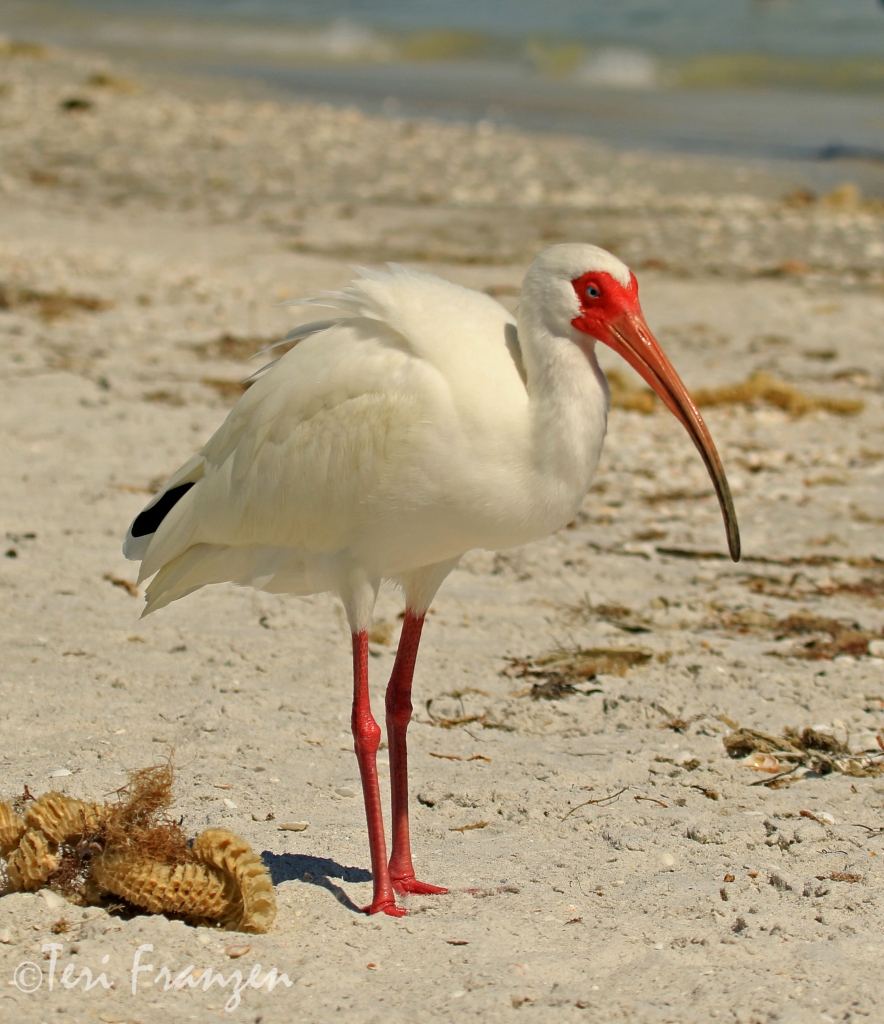
White Ibis are wading birds that can be found everywhere in Florida. They forage in residential neighborhoods, perch in large groups on trees near inland waterways, hunt the coastal shorelines and flock and hunt at Ding Darling NWR.
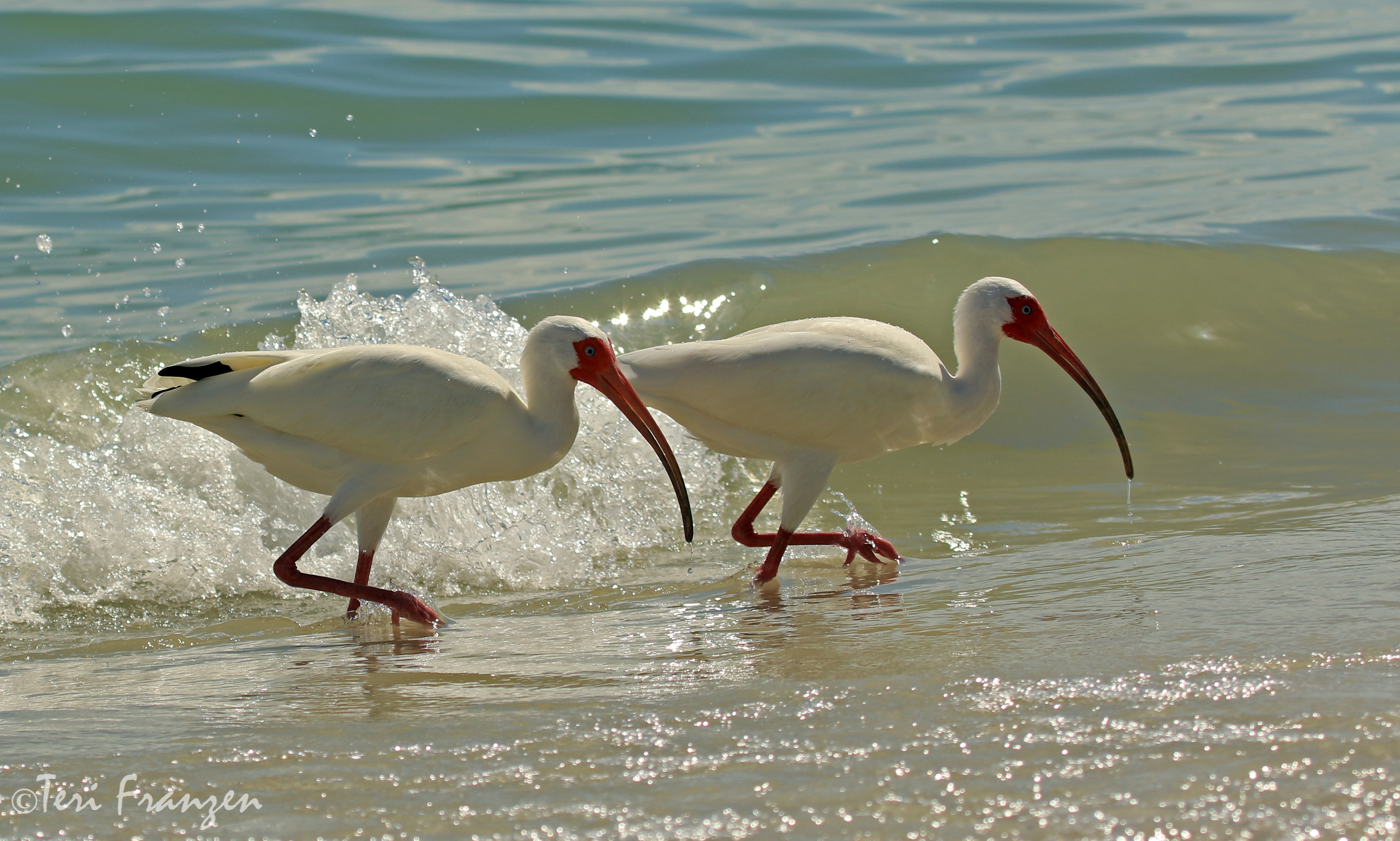

Fish Crows find some cool perches on the beach of Sanibel. Although very similar to the American Crow, the Fish Crow is smaller and can most easily be distinguished by its more nasally sounding, call.
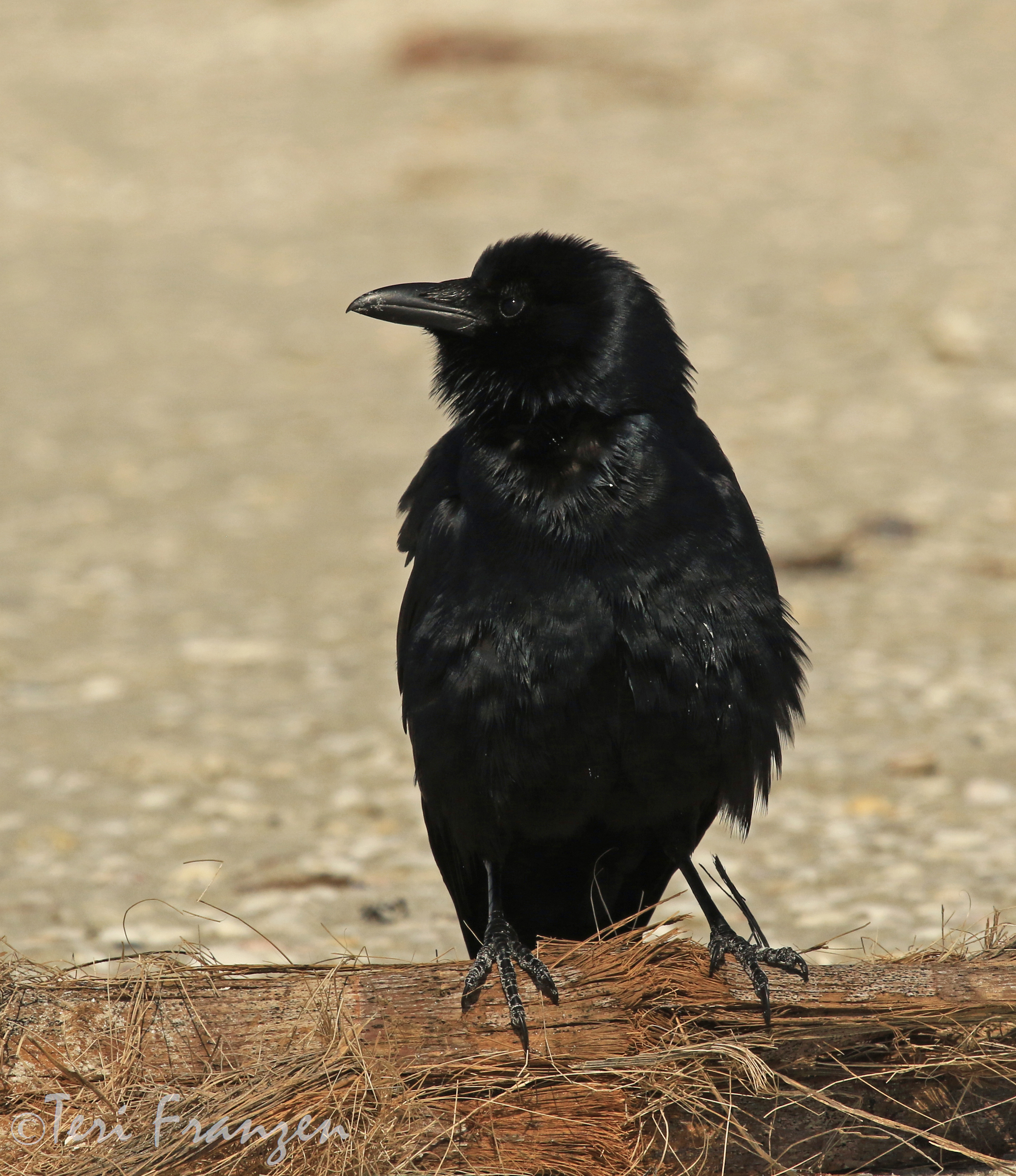
Fish Crows can be found along the coastlines and inland large water bodies throughout the eastern and southeastern US.

A Mottled Duck enjoying the warmth and sunshine. Mottled ducks are non-migratory, spending their lives in Florida and the gulf coast shorelines of the US.
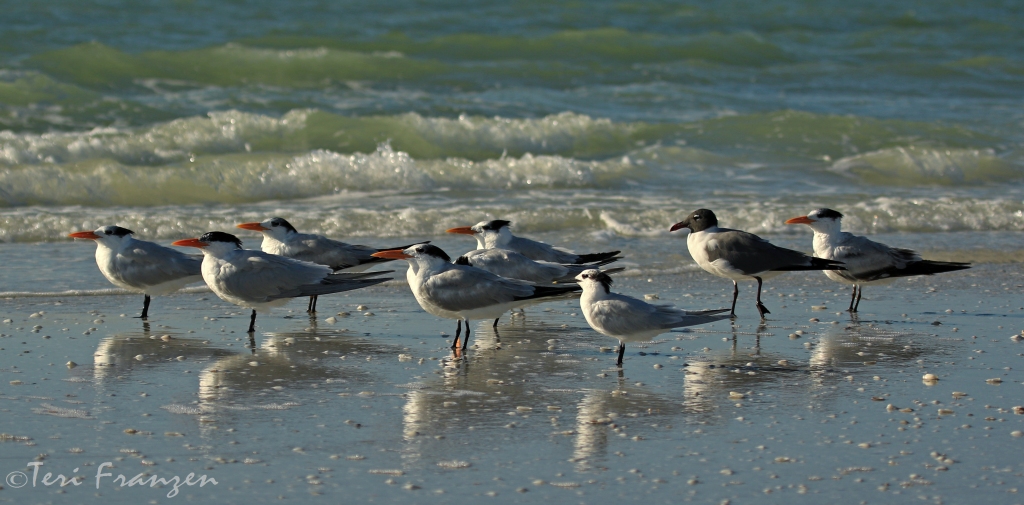
Royal Terns, one Sandwich Tern and a Laughing Gull
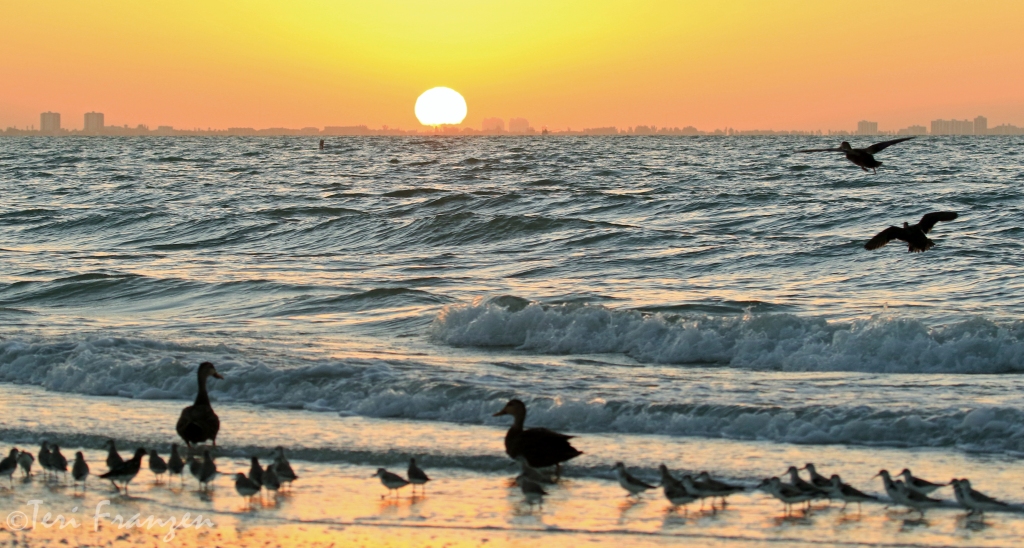
Sunrise with the Sanibel Island locals
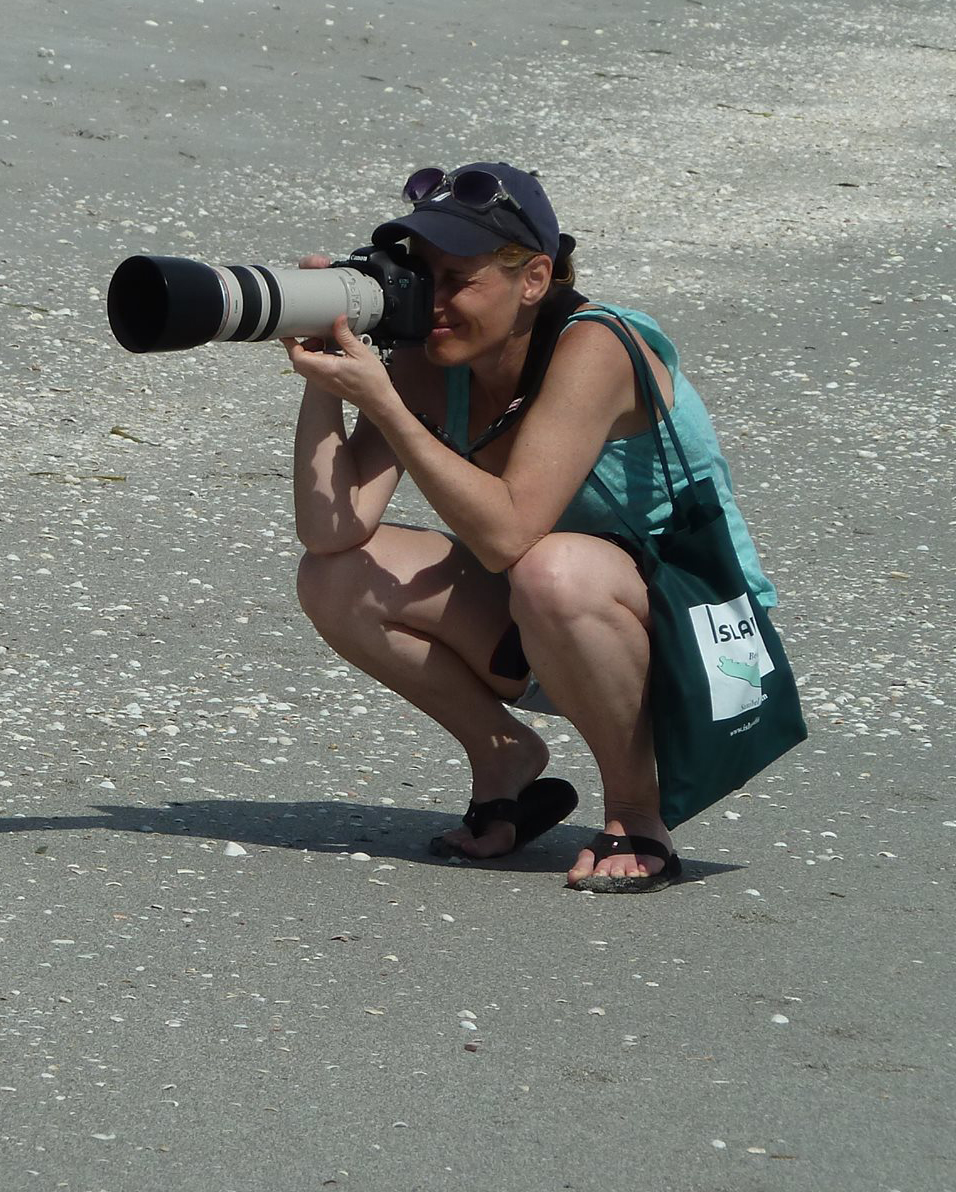
Although from my 2014 trip, I included this for completeness. Me on the beach of Sanibel Island, photographing shorebirds. Photo credit: John Baumlin

